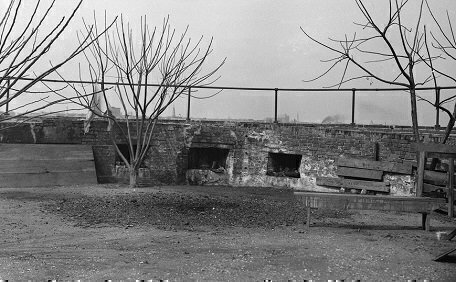President Donald Trump’s executive order asking for a review of national monuments has some critics saying the Trump administration may take the unusual step of delisting a monument. However, Trump wouldn’t be the first President to attempt such a move.
 Trump’s executive order asks Interior Secretary Ryan Zinke to review any national monument created since 1995 that is bigger than 100,000 acres. The action seeks to “end another egregious use of government power” in a clear reference to monuments designanted by Presidents Bill Clinton and Barack Obama.
Trump’s executive order asks Interior Secretary Ryan Zinke to review any national monument created since 1995 that is bigger than 100,000 acres. The action seeks to “end another egregious use of government power” in a clear reference to monuments designanted by Presidents Bill Clinton and Barack Obama.
Back in 1938, there was a different controversy, involving a different President, who sought a similar goal. President Franklin Roosevelt asked his attorney general, Homer Cummings, if he had the executive power to delist a national monument on a tiny island off Charleston, South Carolina.
Franklin’s fifth cousin, Theodore Roosevelt, had established the ability of presidents to establish monuments with his own interpretation of the Antiquities Act of 1906. The act contained language that tried to limit National Monuments “to the smallest area compatible with proper care and management of the objects to be protected."
Congress left the definition of the smallest area compatible to Theodore Roosevelt and granted him the power to establish national monuments by executive decree. That was enough for Roosevelt to issue Presidential Proclamation 794 on January 11, 1908, establishing the Grand Canyon National Monument, in the Territory of Arizona. The order allowed for forestry protection in the monument area, and it barred settlement and the destruction of any feature of the “monument.” The proclamation set off a long battle between conservationists and business interests over the Canyon’s vast area.
In later years, Franklin Roosevelt also fought a pitched battle with Congress over the Jackson Hole Monument approved by FDR. An outraged Congress fought back, and it passed a law overturning Roosevelt’s Jackson Hole executive order, but the President vetoed the bill.
In 1938, Franklin Roosevelt was considering the elimination of the Castle Pinckney National Monument (pictured, above). The small fort sits on a tiny island in Charleston Bay. First built in 1801, the fort was named as a national monument by President Calvin Coolidge in 1924. By that time, the facility was in disrepair, but it retained the distinction of being the first federal property seized by Confederate troops during the Civil War.
President Franklin Roosevelt was unsure if the Antiquities Act gave him the power to rescind a national monument designation made by another President. (It is clear the Act allows a President to create such a designation.)
Attorney General Cummings’ opinion was that the President had limited options. “The statute does not in terms authorize the President to abolish national monuments, and no other statute containing such authority has been suggested. If the President has such authority, therefore, it exists by implication,” Cummings said.
Cummings also looked at prior attorneys’ general opinions and concluded President Roosevelt even lacked the implied power to delist a national monument, with that power residing with Congress, and Roosevelt dropped the idea. In 1951, Congress did move to delist Castle Pinckney from the official list of national monuments and it was later turned over to the state of South Carolina.
But not everyone agrees with some modern scholars that the President lacks the power to delist National Monuments. Todd Gaziano and John Yoo argued in The Wall Street Journal in late December that “the grant of power to a President implies the power to rescind it.” They cited a 1926 Supreme Court decision, Myers v. United States, where the Court said that a President's power to appoint officials, with the Senate’s consent, includes the same power to remove the same officials.
The Congressional Research Service looked at this general issue in November 2016, and it concluded that Congress could delist a national monument under its Article IV Property Clause powers, which state that “Congress shall have Power to ... make all needful Rules and Regulations respecting the Territory or other Property belonging to the United States.”
The ability of the President to take similar action is “untested,” the CRS concluded. The President does have the power to downsize National Monuments, but the CRS also said “it remains undetermined whether removal of a high enough proportion of a monument’s acreage could be viewed as effectively amounting to an abolishment of the monument.”
Scott Bomboy is the editor in chief of the National Constitution Center.
Historical Stories on Constitution Daily
10 fascinating facts about President Ulysses Grant
10 birthday facts about President James Monroe
50 interesting facts about Abraham Lincoln’s life







